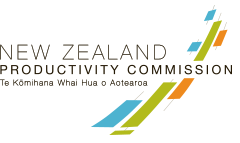The success of any system, policy or programme is measured by whether it increases the freedom that people have to live a life that they value” (Wilson & Fry, 2023). This chapter sets out a vision for a public management system that empowers people to lead better lives. The genesis for change is to build a response to persistent disadvantage around a broader, more inclusive and intergenerationally focused understanding of wellbeing. This response must embrace te Tiriti o Waitangi (te Tiriti), distributive fairness, equity and cultural responsiveness to persistent disadvantage, and it must reflect the socio-historical context and distinctiveness of Aotearoa New Zealand.
System reforms can be difficult, taking time and commitment. As discussed in the previous chapter, our public management system underwent a major redesign a generation ago, and recent changes are increasing responsiveness to the complex realities facing our society, today and in the future.
The recommendations in the following chapters seek to reinforce this redirection in a way that enables a more effective response to persistent disadvantage. As highlighted in Box 3, at stake is the fairness and cohesion of Aotearoa New Zealand society, resolution of disparities across multiple social policy domains, and the capability of people and communities to live better lives.
In the next section, we discuss a comprehensive recent example of embedding principles to give effect to te Tiriti within a sector, setting a new bar that should be applied in other sectors and to the public management system itself. One way to embed te Tiriti is through tikanga frameworks such as He Ara Waiora.
He Ara Waiora is a mātauranga Māori approach for achieving intergenerational wellbeing and social inclusion in Aotearoa New Zealand. It is a uniquely New Zealand approach to lifting living standards that can guide government policy and that is in keeping with a mandate to honour te Tiriti (McMeeking et al., 2019).
Following that, we note the work of successive Aotearoa New Zealand Governments to incorporate longer-term outcomes into policy through “wellbeing approaches”, and then set out principles for the public management system to support all New Zealanders to live better lives.
|
Box 3 Why addressing persistent disadvantage matters for the wellbeing of people, communities and society |
|---|
|
We want all our fellow New Zealanders to live good lives. Aotearoa New Zealand has a long history of valuing fairness and giving everybody a “fair go”. It was the first country in the world to introduce universal suffrage, it became one of the first welfare states, and New Zealanders have a tradition of protest against anti-egalitarian regimes (Sibley & Wilson, 2007). A fair chance for all means all New Zealanders – present and future – feel proud of their cultural identities, are supported to achieve their aspirations, and can live better lives. In the absence of effective support, disadvantage can persist and compound, creating multiple, complex and overlapping barriers. Disadvantage constrains choices and opportunities, with lifetime and intergenerational consequences. The symptoms of persistent disadvantage can be seen in the disproportionately negative health, mental health, and justice sector outcomes for groups vulnerable to disadvantage. From an individual perspective, getting a fair go means having the freedom to live the life one values and has reason to value. This idea is known as the “capability approach” and comes from Nobel Prize-winning economist Amartya Sen. It has become a foundational idea guiding human development internationally (Nussbaum, 2011). The capability approach emphasises the importance of expanding people’s freedom and capabilities to choose and pursue their own goals (Sen, 1992). Effective support can mean the difference between overcoming temporary disadvantage or becoming trapped by multiple persistent disadvantages. Under the capability approach, the goal of policy is to support people to live better lives – lives they value and have reason to value – by empowering individuals and communities to have control over their own lives (Robeyns, 2017). Simply increasing basic resources is not enough. Rather, the difference is between investing early in effective health, education, income and social support that empowers people to lead productive lives, or resources becoming tied up in ongoing but disjointed efforts to treat symptoms of disadvantage. For people to increase their “capability” to enhance their own wellbeing, they may need support to overcome disadvantage and foster social inclusion (Wilson & Fry, 2019). From a societal perspective, addressing persistent disadvantage improves social cohesion. Higher levels of social cohesion mean more trust, which is critical for building the strong institutions needed for a productive economy and thriving society: Social cohesion is the willingness of diverse individuals and groups to trust and co-operate with each other in the interests of all, supported by shared intercultural norms and values. …Higher trust reduces the cost of monitoring and enforcing agreements, which may encourage people to coordinate on projects that they would not otherwise have undertaken. (The Treasury, 2022, p. 82) Trust and social cohesion were an essential part of the Covid-19 response in Aotearoa New Zealand, and they will also be central to our ability to respond to future challenges. Although an international concept, the capability approach can help ground indigenous rights to autonomous governance and self-determination. Likewise, indigenous ideas of connectedness between humans and nature can extend and complement the capability approach – for example, in its application to sustainable development and environmental justice (Robeyns, 2017). |
